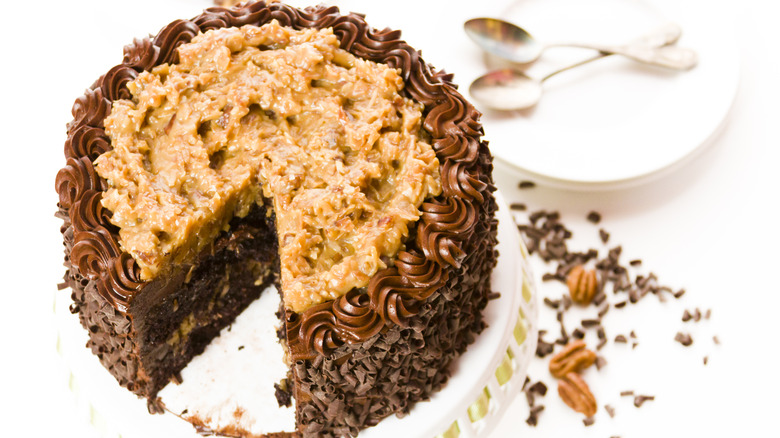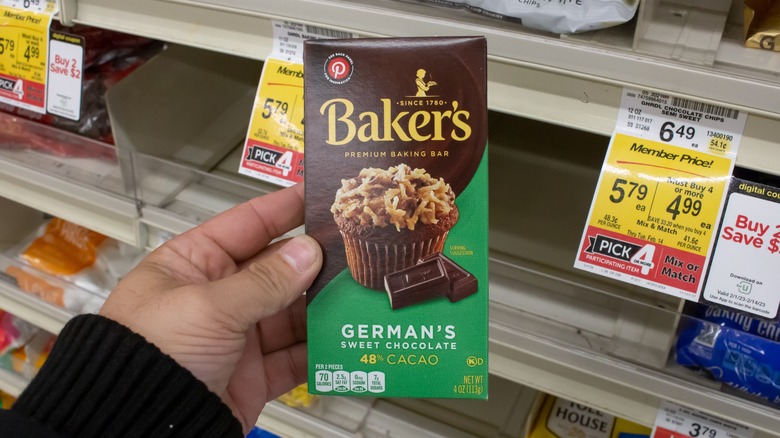German Chocolate Cake Has Nothing To Do With Germany
If you thought that German chocolate cake originated in Bavaria or Brandenburg, you're not alone. Many people are under the mistaken assumption that German chocolate cake is named after the country — especially since some insist that sauerkraut is the perfect addition to German chocolate cake batter. However, both the cake and the name are not only uniquely American, but they're classically Southern. That's right. German chocolate cake is actually from the heart of Texas.
Characterized by layers of rich, moist chocolate sponge slathered in tooth-achingly sweet coconut pecan frosting, it makes sense that this cake is a Southern invention. Decadent and flavorful, it made its debut on the culinary scene in May of 1956 when a recipe for "Summer German Chocolate Cake," was published in the Irving News Record in Dallas, Texas. Though the recipe had probably been around much longer, Ms. Daisy Pearce's submission to the newspaper was the first time many had heard of this soon-to-be iconic dessert.
Though the cake itself is a Southern staple, the name originated in Boston, MA. In the mid-19th century, Bakers Chocolate company, owned by Walter Baker, was the premier producer of unsweetened drinking chocolate in New England. Seeing an opportunity to expand, Baker purchased a recipe for sweetened chocolate bars from his employee, Samuel German, around 1852. Soon, Baker's German Sweet Chocolate bars became wildly popular among home bakers and their sugar-loving children. They needed no additional sweetening and could be enjoyed straight from the wrapper or added to an array of delicious recipes.
More than just chocolate — what sets German chocolate cake apart
To anyone who's never tried it, German chocolate cake may seem like an ordinary chocolate sponge layered with fancy frosting; but nothing could be further from the truth. Like Michigan's delicious chocolate bumpy cake, German chocolate cake recipes use buttermilk. This ingredient adds tangy acidity to intensify the chocolate, along with a hefty dose of flavorful fat and moisture.
Buttermilk is also the secret to tender biscuits, reacting with the baking soda to make the baked goods with a springy and fine crumb. This chemical reaction combined with melted sweet baking chocolate gives German chocolate cake a shaggy, rustic texture more similar to a brownie than other types of cakes. Since such a gooey cake is likely to collapse under dense frosting, many recipes call for whipped egg whites to be folded into the batter. The egg white foam acts as a binder and stiff support, increasing the cake's structural integrity and enabling it to be cut into tidy pieces that hold together easily.
Though the cake itself would be a delicious treat on its own, the classic coconut-pecan cooked frosting is truly the crowning glory of this dessert. Its deep richness comes from the combination of butter, eggs, evaporated milk, and both white and brown sugar cooked down into a thick, velvety texture reminiscent of a caramelized pastry cream. Once cooled and blended together with the necessary flavorings, it acts as a bridge between German chocolate cake's deliciously fudgy layers.

